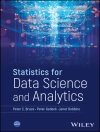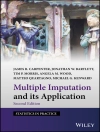A fresh approach to bridging research design with statistical analysis
While good social science requires both research design and statistical analysis, most books treat these two areas separately. Understanding and Applying Research Design introduces an accessible approach to integrating design and statistics, focusing on the processes of posing, testing, and interpreting research questions in the social sciences.
The authors analyze real-world data using SPSS software, guiding readers on the overall process of science, focusing on premises, procedures, and designs of social scientific research. Three clearly organized sections move seamlessly from theoretical topics to statistical techniques at the heart of research procedures, and finally, to practical application of research design:
* Premises of Research introduces the research process and the capabilities of SPSS, with coverage of ethics, Empirical Generalization, and Chi Square and Contingency Table Analysis
* Procedures of Research explores key quantitative methods in research design including measurement, correlation, regression, and causation
* Designs of Research outlines various design frameworks, with discussion of survey research, aggregate research, and experiments
Throughout the book, SPSS software is used to showcase the discussed techniques, and detailed appendices provide guidance on key statistical procedures and tips for data management. Numerous exercises allow readers to test their comprehension of the presented material, and a related website features additional data sets and SPSS code.
Understanding and Applying Research Design is an excellent book for social sciences and education courses on research methods at the upper-undergraduate level. The book is also an insightful reference for professionals who would like to learn how to pose, test, and interpret research questions with confidence.
Spis treści
Preface xvii
Acknowledgments xix
PART I WHEEL OF SCIENCE: PREMISES OF RESEARCH 1
1 'DUH’ SCIENCE VERSUS 'HUH’ SCIENCE 3
2 THEORIES AND HYPOTHESES 21
3 OBSERVATION AND EMPIRICAL GENERALIZATION 35
4 ETHICS 52
PART II WHEEL OF SCIENCE: PROCEDURES OF RESEARCH 63
5 MEASUREMENT 65
6 USING SPSS IN RESEARCH 83
7 CHI-SQUARE AND CONTINGENCY TABLE ANALYSIS 90
8 LEARNING FROM POPULATIONS: CENSUSES AND SAMPLES 102
9 CORRELATION 127
10 REGRESSION 146
11 CAUSATION 162
PART III WHEEL OF SCIENCE: DESIGNS OF RESEARCH 203
12 SURVEY RESEARCH 205
13 AGGREGATE RESEARCH 234
14 EXPERIMENTS 251
15 STATISTICAL METHODS OF DIFFERENCE: T TEST 270
16 ANALYSIS OF VARIANCE 280
17 FIELD RESEARCH 301
18 CONTENT ANALYSIS 316
PART IV STATISTICS AND DATA MANAGEMENT 327
STATISTICAL PROCEDURES UNIT A: WRITING THE STATISTICAL RESEARCH SUMMARY 329
STATISTICAL PROCEDURES UNIT B: THE NATURE OF INFERENTIAL STATISTICS 333
DATA MANAGEMENT UNIT A: USE AND FUNCTIONS OF SPSS 343
DATA MANAGEMENT UNIT B: USING SPSS TO RECODE FOR T TEST 357
DATA MANAGEMENT UNIT C: DESCRIPTIVE STATISTICS 364
STATISTICAL PROCEDURES UNIT C: Z SCORES 389
Glossary 397
Bibliography 411
Index 416
O autorze
MARTIN LEE ABBOTT, Ph D, is Professor of Sociology at
Seattle Pacific University, where he also serves as Executive
Director of the Washington School Research Center. He is the author
of The Program Evaluation Prism: Using Statistical Methods to
Discover Patterns and Understanding Educational Statistics Using
Microsoft Excel and SPSS, both from Wiley.
JENNIFER Mc KINNEY, Ph D, is Associate Professor and
Co-chair of the Department of Sociology and Director of the
Women’s Studies Program at Seattle Pacific University. She
publishes articles, makes presentations, and consults on and
teaches research design.












